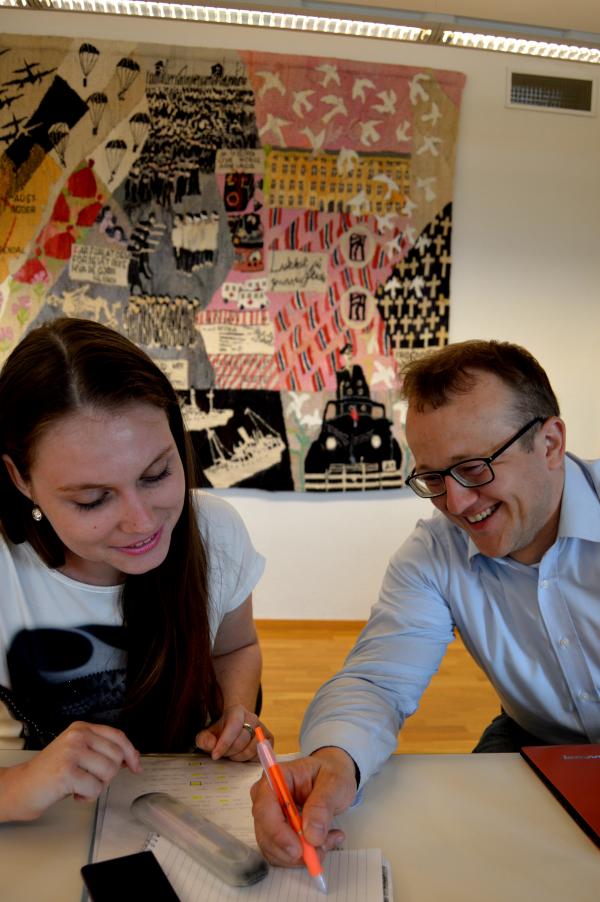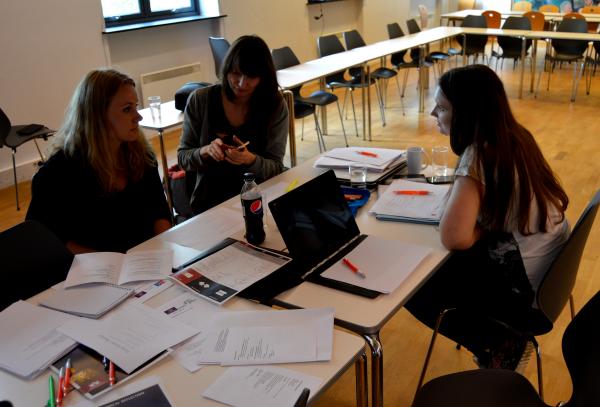Communication strategy
Published on 28 July 2015
Nowadays, a project the public does not know about might as well not exist. Presentations, promotions and communication with the public are becoming increasingly important, and a great emphasis is put on them by our grant provider EEA, which is financing 80 per cent of the project. We also consider this part of the project important, and not only because we find our work interesting, but also because we hope that our historical research project might inspire other cultural and research institutions. So, how do we communicate?
Internal communication – meetings and Google+
We would not be able to communicate with the public without first communicating among ourselves. Surely you have thought to yourself once or twice while checking your mailbox that e-mail communication is not precisely the most effective. This is why, within our Czech team, we have opted for regular personal work meetings at which we inform each other of our progress in the recording and processing of books, of the results of various stages and the direction of the research; in addition, we deal with the necessary administrative and economic issues and many other matters we need to discuss and resolve.
However, the project team is international, which unfortunately makes internal communication somewhat difficult, as we cannot see our Norwegian colleagues in person as often as (ideally) we would need to. Therefore, we try to use the workshops at which we meet to the full.
Nevertheless, we do need to talk to each other, and this is why we have chosen to use the Google+ platform, which is free, to communicate throughout the team. Google+ enables the establishment of our own community, which can be accessed only by invited users; the content is not visible to anyone outside. Within this community, we have set up several thematic areas (e.g. the web, promotion, administration and others) where we post and comment on other people’s posts. As we all work with Google drive, too, we can, thanks to the Google docs and Google+ connections, share texts, pdf files and photographs. We can find everything necessary in one place; the content can be accessed by each of us, and we don’t have to look painstakingly for attachments in our old e-mails. Moreover, sorting by topics simplifies everything even further.
Outside communication – the web, media and social networks
Since you are reading this article, you must have noticed our most important communication channel – our website. In addition to the basic and unvarying information about the project, its objectives and our team, we are gradually adding articles to the section Interesting points from the project (Findings), and recently, we have also set up a subpage dedicated to the reception of the project in the media and on social networks.
The National Library of the Czech Republic and all its employees cannot follow all the projects that are realized within the organization. This is why some of our efforts are aimed at our own ranks – the project the Books Discovered Once Again appeared in the library's e-newsletter, and it is also going to be in the upcoming desktop calendar for 2016; it also appears regularly on the library’s Facebook profile, which is viewed not only by the staff, but also the wider public.
Our Norwegian partners promote the project on their own Facebook profile, written in Norwegian on their website, and they also managed to place an extensive article in the local newspaper, where our project even appeared on the title page.
We have approached professional library journals, and soon an article will be published in the electronic magazine Ikaros; after the holidays, an extensive text will appear in the magazine Čtenář, which is published by the Central Bohemian Research Library in Kladno.
The project is international, so part of the promotion is being run in English, too. Texts for our website are written in Czech first and then translated into English. Sometimes the Czech version does not always fully correspond with the English. For the translations, we use a professional translating agency, but we try to make the news in the English version available in the shortest possible time. Recently, we have also started to experiment with the microblogging social network Twitter, where we draw attention to interesting points from the project in English so that this channel can also be used by our Norwegian colleagues.
Overall, we try to make the promotion and communication strategy as diverse as possible so that it has a chance to address the widest possible audience.

